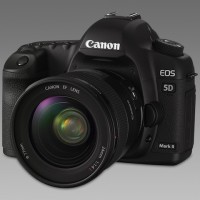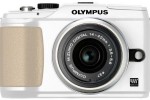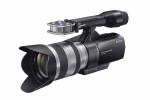
Last week I was lucky enough to grab a spot at the screening of the Great Camera Shootout 2011, held at the Framestore and organised by Zacuto. It was a pretty simple concept: take 13 different video or video-enabled cameras and put them through their paces. Cameras ranged in price from those that just hit four digits to those well into six figures. Nine different tests were administered; we looked at comparisons of everything from sharpness to compression losses on a specially-made recording. And the results?
Well, not so simple. There wasn’t really an overall winner. (You didn’t find that surprising, did you?) Different cameras handled different conditions with varying degrees of aptitude or comfort. Lots of people were mightily impressed by the Phantom Flex, and for how much it costs, the Sony F3 seemed to hold its own against the big guns, such as the Arri Alexa. And whilst the Canons and the Nikon were at the bottom of the heap, what was obvious was that for what they offer, they’re damn good pieces of kit.
What it comes down to is what qualities you’re looking for specifically in your camera and the footage it produces, combined with your budget.
Whilst the conversation afterwards raised some absolute gems, such as ‘Film is dead!’ (comparatively the Kodaks’ performances were very disappointing) I came away wondering just what the future for video is, and quite specifically, how far can Canon and Nikon develop their technology and push into the market? I suppose that my focus on those two was inevitable given my background, but anyway.

Do Canon and Nikon want to compete in the mirror-less market, where others are doing so well already?
Earlier this week over lunch, Haje and I pondered this question even further. You see, whilst there is lots of gossip over the potential Canon and Nikon mirror-less offerings, they’re not there yet and Olympus, Panasonic, Samsung, and Sony seem to have done a pretty good job of sewing up that market already. Even with their names, it’s going to take a hell of lot for Canon and Nikon to break that quartet’s strangle-hold. What if the big two, and Canon in particular, have their eyes on a slightly different prize?
How about an enthusiastic amateur’s video camera? Perhaps one that does stills on the side?
I’m not for one minute suggesting that either of them are going to give up on stills cameras, far, far from it. (Hell, I think I’d cry if they did.) What I’m suggesting is that perhaps they’ve spotted a gap in the video market – sort of equivalent to that which mirror-less and bridge cameras are currently occupying in the stills market – and that’s where they’re heading. Bridge videos, if you like. A video camera that’s a step above the video-enabled dSLRs, one that’s seen more as a video camera than a stills one. Sony has already dipped its toes in the water with the NEX VG10, but a bit of competition never hurt, no?
It would be a graceful way for them to walk away from the mirror-less camera skirmish and embark on something new that continues to develop an area where they already perform well. It also offers the devoted following of Canon and Nikon film-makers some progression and new opportunities, especially if they go with interchangeable lenses.
Now, this is complete speculation. I could be utterly under-estimating just how much Canon and Nikon want that mirror-less market and are prepared to throw at it; I could be over-estimating how much the world needs a more advanced video camera made by one of the two big names in stills. I am, however, quite taken by the possibilities here. And if nothing else, it was an interesting intellectual exercise in conjecture.


